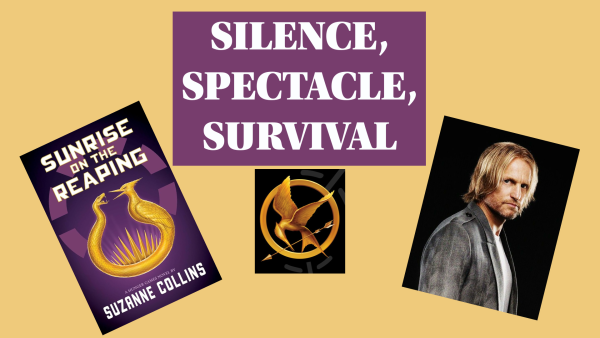The Concealed Cost of Social Media

The concept of happiness is full of complexity and is very broad. Many people ask how to define happiness, achieve it, and nurture it over time. In A Balanced Psychology and a Full Life, America set out to cure mental illness at the time of WWII. To do so, happiness needed to be defined, and they concluded that the constituents and routes to happiness were pleasure, engagement, and meaning (Martin E. P. Seligman, et al, 265). Designs and interventions were created to nurture each route and yield happiness, overall optimism, and a cure for mental illness in the end. Tools have been created over time to help boost happiness, and those can be anything such as sports, books, gaming or electronics, and more. The creators of those tools aim to supply their customers with as much enjoyment and entertainment possible for as long as they are able to. Overall, those are just a few of many interventions to nurture happiness as described in A Balanced Psychology and a Full Life. One that is most prominent in today’s culture though is social media. Social media, just like the other interventions, was intended for good if used correctly. Sadly, social media has evolved from its original purpose and negatively impacted its users along the way.
According to IImskills, social media is defined as “the form of electronic communication (such as websites for social networking and microblogging) through which users create online communities to share information, ideas, personal messages, and other content (such as videos) (IImskills).” Social media was originally used to stay in contact with other people, including our acquaintances, idols, and loved ones. This allowed us to communicate without physical presence and stay in touch and updated with people we know or perhaps even do not know. Social media was the key to unlimited access to communication wherever and whenever a person desires it. Through that access, enjoyment was to be emitted too. A post or video on social media can attract attention and reach thousands of people just from one’s phone. These posts can be used to share information about anything, and many businesses use them for digital marketing, which boosts the economy as well (IImskills). One objective of social media is to educate society on certain topics by providing gateways to the internet and other credible sources. Another objective is to encourage and increase customer loyalty through its features and more (IImskills). With that loyalty though, large social media platforms aim ultimately to make a profit from their users. That aspect can lead to a slippery slope inspired by the crave for riches and success.
Although many users utilize social media to make themselves feel better, oftentimes it is hard to do that. Research has shown that social media has actually decreased moral sensitivity among its users (Xiaoyu 359). Moral sensitivity is another term used to describe empathy. Social media had the plan to allow people to be vulnerable on their platform and heal their mental illnesses and more, but many users pursue online shaming, which creates a lack of moral sensitivity in society as a whole. Xiaoyu Ge in his research regarding online shaming mentioned that online shaming is a form of public humiliation and is composed of four categories. Those categories include vigilantism (the human flesh search engine), bullying, bigotry (people or groups attacked based on their race, gender, sexual orientation, religion, or color), and gossiping (sharing and posting different things without concern of accuracy). The victims of online shaming pay a large price and are mostly innocent. Many of the shamers do not recognize the moral intensity of their hostile comments and posts because having an online platform makes it easier to get away with. Another researcher in Xiaoyo’s study concluded, based on his evidence, that moral intensity affects the recognition of moral issues because of its salience and vividness. People who recognize moral issues are aware that the effects of the issue are extreme or involve significant others. The moral intensity of certain situations is different from others because public shaming is harder to pull off than online shaming. Face-to-face conversations include facial expressions, eye contact, and more affecting what comments are made. That is the reason why social media decreases moral sensitivity because online shaming is easier to get away with. This aspect only makes the users searching for a better self-image more insecure and even more lonely (Yang and Brown).
Along with affecting one’s mental health and self-image, social media also poses a more immediate danger to society. Keep in mind, all of these implications come from social media misuse and abuse. These immediate threats include cyberbullying (similar to a lack of moral sensitivity), racial hostility, stalking and sexting(Linvill 372-373), hacking, the glamorization of dangerous activities, and the spread of disinformation(Logan 59-60). Cyberbullying is prominent on college campuses, high schools, and even typical jobs. What makes this an issue is based on how it is addressed with a lack of seriousness in society, and many users are less likely to intervene on behalf of victims in cases of cyberbullying than in cases of offline bullying(Linvill 372). Racial hostility is also a large issue, especially today, and social media only fuels that fire of hatred. Social media gives way for people to display ongoing racially biased practices and views, exacerbating existing tensions, and negative stereotypes(Linvill 373). Physical threats also are made against different races, and it promotes hatred in society. With that, stalking and sexting add to the hazardous environment in social media. Users are watched by others due to anxiety and insecurity. Sexting is also defined as the exchange of sexually suggestive images, videos, or messages on cell phones (Linvill, 374). This issue is linked to self-image as well because certain users want to portray themselves as “sexy” or generally attractive. Sexting also falls into the lines of pornographic material, which has a plethora of negative effects too. Those pictures sent through sexting along with other private information can also be accessed through hacking. Every user’s personal information is at risk through this issue. Social media gives people the ability to take information and shape it into what they want, spreading false information to society in the process.
What is particularly frightening is that, despite all these negative side effects, social media still is popular in today’s culture. A film called The Social Dilemma portrays former employees of large social media companies giving information about how social media works behind the scenes. Companies like Snapchat, Instagram, and Twitter use specific algorithms that manipulate their users into an addiction to their platforms. The film states that these algorithms study every aspect of a user’s experience in order to make it more enjoyable for them, and they consist of what posts they like or share, the time they spend on the app, or even how long they look at a certain post. These aspects promote addiction above all else because they allow social media companies to make their app uniquely amusing and full of dopamine hits (a chemical in the brain linked to pleasure and satisfaction) for every person. This addictive cycle aids users in engaging in passive activities, which is when they consume media content instead of interacting with others (Yang 636-637). Passive use or content consumption is typically associated with poor well-being, and several surveys found that passive use of social media is connected with higher levels of depressed mood and anxiety. (Yang 636). Even going back to The Adult Bodies Playing Teens on TV, this kind of content consumption leads many to socially compare themselves with their peers, leading to society’s perceived pressure of having to appear happy and well-adjusted in their online self-presentation just like adult actors did to realistic teenagers in Christina Caturruci’s article. This addictive cycle carried out by the algorithms mainly keeps users in the negative effects of social media.
To conclude, social media was intended to be a tool to benefit society, but the reality is that its effects damage it. It is questionable whether social media will continue to emit negative effects leading into the future or not. Jaron Lanier, a computer scientist and writer who has worked for some of the biggest names in tech like Microsoft and Google, predicted that social media will lead to danger if not changed soon (Conley 96). Lanier said, “If we go down the current status quo for, let’s say, another 20 years, we probably will destroy our civilization through willful ignorance.” Many think that it only comes down to large social media companies making money because they ultimately profit from the data that users contribute to the algorithms incorporated into their apps. The continued use of social media without certain regulations may prove fatal to society in the future. Joe Toscano, a former experience designer at Google, thinks regulations tied to money are the most promising way forward (Conley 98-99). Either way, the negative effects far outweigh the positive, and the future depends on what decisions are made pertaining to regulations on social media. Ultimately, how people choose to use this tool will determine society’s future.
Works Cited
Cauterucci, Christina. “The Adult Bodies Playing Teens on TV.” Film Studies: Perspectives on Visual Culture, compiled by Christine R. Farris and Deanna M. Luchene, Third ed., New York City, Pearson, 2018, pp. 211-14.
Ge, Xiaoyu. “Social Media Reduce Users’ Moral Sensitivity: Online Shaming as a Possible Consequence.” Aggressive Behavior, vol. 46, no. 5, Sept. 2020, pp. 359-69. Criminal Justice Abstracts with Full Text, https://doi.org/10.1002/ab.21904.
Kate Conley. Social Media and Modern Society. Essential Library, 2021. eBook Collection (EBSCOhost), proxyko.uits.iu.edu/login?url=https://search.ebscohost.com/login.aspx?direct=true&db=nlebk&AN=3125626&site=eds-live.
Linvill, Darren L. “Addressing Social Media Dangers within and beyond the College Campus. Forum: The Dark Side of Social Media.” Communication Education, vol. 68, no. 3, 1 Jan. 2019, pp. 371-80. ERIC, proxyko.uits.iu.edu/login?url=https://search.ebscohost.com/login.aspx?direct=true&db=eric&AN=EJ1218016&site=eds-live.
Madhushree. “Objectives of Social Media: Its Importance and Purpose.” IImskills, 20 Nov. 2022, iimskills.com/objectives-of-social-media-its-importance-and-purposes/. Accessed 7 Dec. 2022.
Robert K. Logan, and Mira Rawady. Understanding Social Media : Extensions of Their Users. Peter Lang Inc., International Academic Publishers, 2021. eBook Collection (EBSCOhost),
proxyko.uits.iu.edu/login?url=https://search.ebscohost.com/login.aspx?direct=true&db=nlebk&AN=2967644&site=eds-live.
Seligman, Martin E. P., et al. “A Balanced Psychology and a Full Life.” Philosophy: Happiness & Its Discontents, compiled by Christine R. Farris and Deanna M. Luchene, Third ed., New York City, Pearson, 2018, pp. 263-67.
The Social Dilemma. Directed by Jeff Orlowski, Exposure Labs, 2020. Netflix app.
Yang, Chia-chen, et al. “Social Media and Psychological Well-Being among Youth: The Multidimensional Model of Social Media Use.” Clinical Child and Family Psychology Review, vol. 24, no. 3, Sept. 2021, pp. 631-50. MEDLINE with Full Text, https://doi.org/10.1007/s10567-021-00359-z.
Hey my name is Ethan Johnson, and I'm currently a senior at Lewis Cass. I play baseball and tennis, and I pretty much enjoy watching any sport with a ball...










Noah Preston • Feb 27, 2023 at 11:24 am
I liked this article even though I disagree. I think I saw this article last year. I don’t know if you rewrote it from the essay we had to do last year in English, but it is word for word. Good article though I guess.
Elijah Beard • Feb 27, 2023 at 11:21 am
Great Article Ethan! What data social media collects on you is absolutely insane. I have quit many of the platforms I use and I noticed it generally made me a happier person than when I was actively using them.